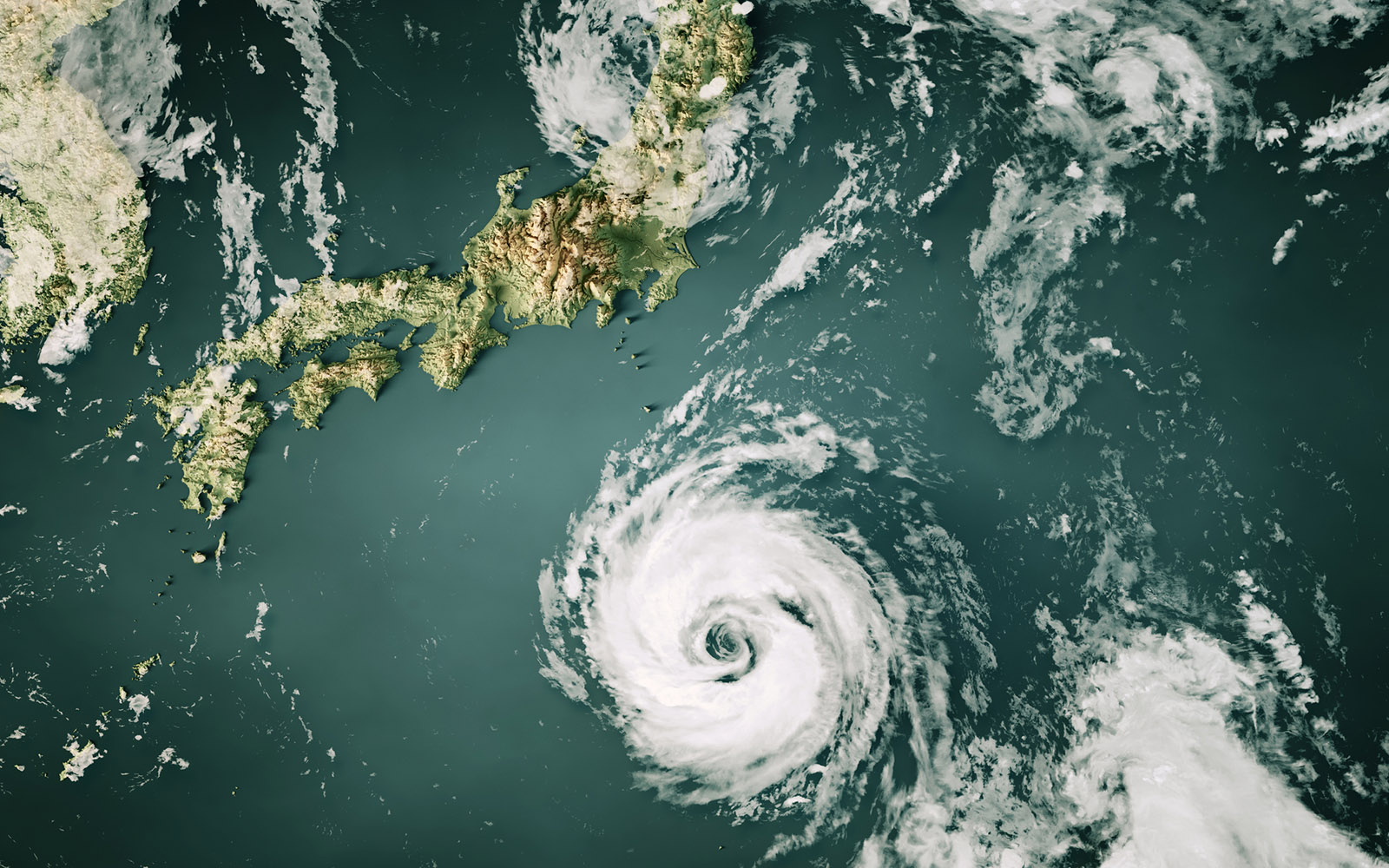 Summary:
Summary:
Typhoon season in Okinawa typically runs from June to October, bringing strong winds, heavy rain, and power outages.
This checklist will help you prepare your home before, during, and after a typhoon to stay safe and prevent property damage.
🌤 1. Before the Typhoon (Preparation Stage)
Start preparing as soon as a typhoon warning is issued by the Japan Meteorological Agency (JMA).
(JMA Typhoon Information – English)
✅ Home Preparation
Secure or store all outdoor items: trash bins, flowerpots, bicycles, chairs, etc.
Remove or tightly tie down BBQ grills, umbrellas, and drying racks — these can become flying objects.
Close and lock all windows and shutters; tape large windows to reduce shattering risk.
Move valuable or electrical items away from windows.
Place towels or sandbags near sliding doors to prevent water from entering.
Fill bathtubs and buckets with water (for cleaning and flushing) in case of a water outage.
⚠️ Important: Do not leave anything on balconies or rooftops — strong winds can carry items into neighboring buildings.
✅ Emergency Supplies Checklist
Prepare the following essentials:
| Item | Recommended Quantity | Notes |
|---|---|---|
| Drinking water | 3 liters per person per day | At least 3 days’ supply |
| Non-perishable food | Enough for 2–3 days | Canned or instant foods |
| Flashlight & spare batteries | 1 set | Avoid using candles |
| Power bank | Fully charged | For phones or small devices |
| First aid kit | 1 per household | Include basic medicines |
| Cash | ¥10,000–¥20,000 | ATMs may be unavailable |
| Important documents | Waterproof bag | Passport, insurance, lease |
| Pet supplies | If applicable | Food, leash, carrier |
🛒 Where to buy: Local stores such as San-A, Makeman, and Don Quijote stock emergency kits before typhoon season.
🌧 2. During the Typhoon
When strong winds and rain begin:
Stay indoors and avoid going outside for any reason.
Keep curtains closed to protect from glass if windows break.
Unplug unnecessary electronics to prevent damage from power surges.
Do not use elevators during severe weather — power cuts may trap you inside.
Refrain from driving until authorities confirm roads are safe.
If you hear water leaks, place towels or buckets and contact us after the storm passes.
⚠️ Never go outside to inspect damage during the typhoon. Wait until the warning has been officially lifted.
💨 3. After the Typhoon
Once the storm has passed and it is safe to go outside:
Check for broken glass, fallen branches, or sharp debris around your property.
Report any damages or leaks to Saki Corporation immediately.
Inspect balconies, doors, and AC outdoor units for water buildup or dislodged covers.
Avoid touching downed power lines or cables — report them to our office.
Dispose of damaged outdoor items properly; bulk trash pickup may be required.
☎️ Phone: 098-923-0454
💡 Tip: Take photos of any damage before cleaning up — this helps with insurance or repair requests.
🧰 4. Protecting the Property
To reduce risk of damage and extra cleaning charges:
Regularly trim trees and remove loose outdoor items before typhoon season.
Keep balcony drains clear of leaves and debris.
Avoid taping over air-conditioner vents or covering units entirely — use a secure tarp or cloth instead.
Ensure window locks and screens are functioning properly.
⚠️ Tenants may be responsible for damage caused by unsecured outdoor items (e.g., flying furniture or potted plants).
🗺 5. Helpful Local Resources
| Resource | Description | Link |
|---|---|---|
| Japan Meteorological Agency (JMA) | Real-time typhoon info in English | JMA Typhoon Map |
| Okinawa Prefectural Government | Disaster preparedness info | Disaster Safety Guide (JP) |
| U.S. Kadena Air Base | Tropical Cyclone Conditions (TCCOR) updates | Kadena Weather Updates (Facebook) |
| Japan Red Cross | Emergency preparedness and first aid info | Red Cross Japan (EN) |
Comments
0 comments
Please sign in to leave a comment.